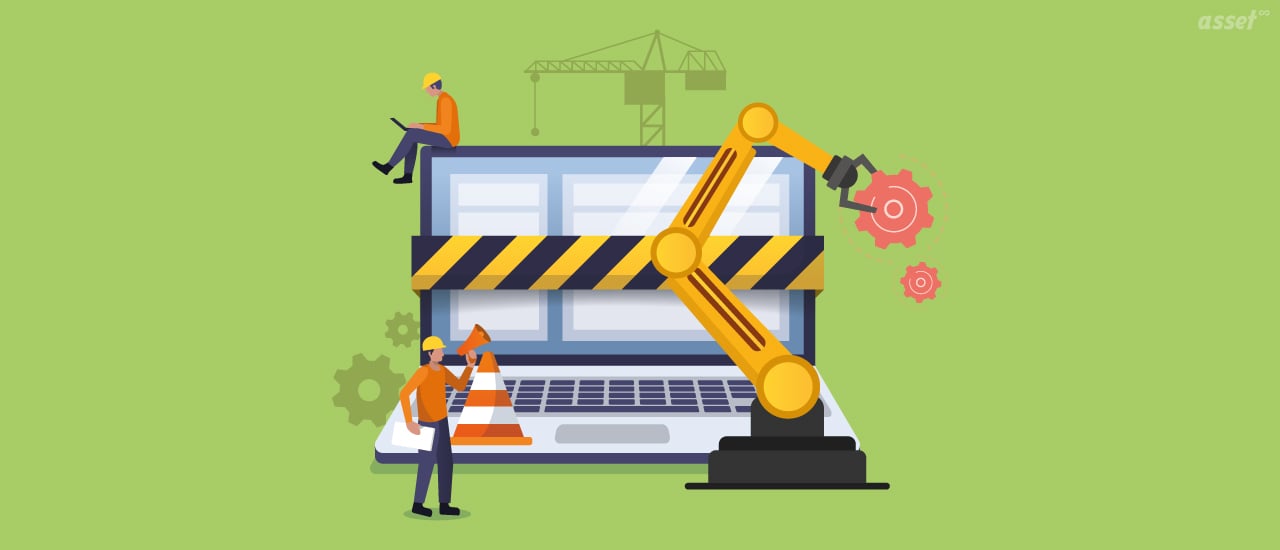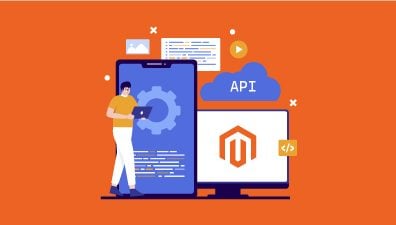In today’s fast-paced eCommerce environment, online retailers must provide their customers with fast, engaging, and personalized shopping experiences. However, achieving this can be a challenge, especially when using traditional eCommerce platforms. This is where Headless PWA for Magento 2 comes in. This modern eCommerce architecture separates the front-end and back-end components of an online store, allowing for increased flexibility, better scalability, faster load times, and improved user experiences. In this article, we take a closer look at Magento 2 Headless PWA, its advantages and challenges, and how it compares to traditional Magento 2 architecture. Whether you are a business owner or a developer, this article will provide you with valuable insights into the benefits and considerations of using this architecture for your eCommerce needs.
Table of Contents
What is Magento 2 Headless PWA?
Headless PWA for Magento 2 is a modern approach to building eCommerce websites using Magento 2 as the back-end and a separate front-end application, which is built using PWA technology. The headless architecture separates the front-end and back-end of an eCommerce website, allowing developers to create unique and customizable user interfaces that are faster and more responsive than traditional website designs.

In the architecture, the front-end application, which is the PWA, communicates with the Magento 2 back-end through APIs (Application Programming Interfaces) to retrieve data and perform transactions. This allows for a more flexible and customizable user interface, with faster load times and improved performance.
Advantages of Headless PWA for Magento 2
Faster load times
One of the key advantages of Magento 2 Headless PWA is that it can significantly improve website loading times. In a traditional Magento 2 website, the front-end and back-end are tightly coupled, which means that every time a user interacts with the website, the entire page must be reloaded. This can lead to slow loading times, especially for larger eCommerce websites with a lot of content and data.
The front-end and back-end are decoupled, and the front end is built using PWA technology. PWAs are designed to be fast and responsive, with a focus on optimizing the user experience by minimizing load times and improving performance.

Because the front-end is separate from the back-end in this architecture, the front-end application can use caching and other techniques to reduce load times and improve the overall speed of the website. Additionally, because PWAs are designed to work seamlessly with slow or unreliable network connections, users can still access the website even if they have a poor internet connection.
In practical terms, this means that users will have a faster and more seamless experience when interacting with your eCommerce website. Pages will load quickly, and users will be able to navigate through the site more easily, which can lead to increased engagement and conversions.
Offline mode
Another advantage of Headless PWA for Magento 2 is the ability to operate in offline mode. Unlike traditional eCommerce platforms, Headless PWA stores can be designed to function without an internet connection, which is especially useful for businesses with customers in areas with unreliable internet connectivity.

Offline mode allows users to browse products, add items to their cart, and complete transactions even when they are not connected to the internet. When the user regains an internet connection, the transaction data is synced to the server automatically. This feature offers a seamless user experience, increases customer satisfaction, and can be a significant competitive advantage for businesses operating in areas with unreliable internet connectivity.
Improved user experience
Another major advantage of Magento 2 Headless PWA is an improved user experience compared to traditional Magento 2 websites. The headless architecture allows developers to create custom front-ends that are designed specifically for their target audience, with features and functionality that are optimized for their needs.
Developers can create a seamless and intuitive user experience that combines the speed and responsiveness of a native mobile app with the reach and accessibility of a web app. PWAs are designed to be highly responsive, with fast load times and smooth transitions between pages, which can create a more engaging and immersive user experience.

In addition to fast loading times, Headless PWA for Magento 2 also offers a range of other features that can improve the user experience. For example, PWAs can be designed to work offline, allowing users to access content and perform transactions even when they are not connected to the internet. They can also use push notifications to keep users engaged and informed about new products, promotions, or other updates.
Increased flexibility
Magento 2 Headless PWA offers an increased flexibility advantage to developers and businesses. Because the front-end and back-end are decoupled, developers can build custom front-ends that are tailored to the specific needs of their business, without being limited by the constraints of the Magento 2 platform.
This increased flexibility allows businesses to create unique and innovative user experiences that stand out from the competition. For example, businesses can use PWAs to create custom product catalogs, personalized product recommendations, or interactive shopping experiences that engage and delight their customers.

Additionally, because the front-end and back-end are separate, businesses can easily integrate Magento 2 with other third-party applications and services, such as marketing automation tools, analytics platforms, or social media networks. This can help businesses to streamline their operations, improve their marketing efforts, and gain insights into their customers’ behavior and preferences.
Better scalability
Magento 2 Headless PWA provides better scalability compared to traditional Magento 2 websites. The headless architecture allows businesses to separate the front-end and back-end of their website, which can help to reduce the load on the server and improve overall performance.
Therefore, businesses can leverage the power of serverless computing and cloud-based hosting to scale their eCommerce operations as needed. This means that they can easily add new features, products, or services to their website without having to worry about server capacity or performance issues.
Easier maintenance
Last but not least, Magento 2 Headless PWA makes maintenance of the website easier for business owners. With traditional Magento 2 websites, any updates or changes to the front end would require modifications to the back-end code, which can be time-consuming and complex.

However, with the headless architecture for Magento 2, businesses can make changes to the front end without affecting the back-end code. This means that developers can make updates or modifications to the front end without worrying about any negative impacts on the back-end functionality.
In addition, PWAs are designed to be modular and reusable, which means that developers can build components that can be reused across different pages or sections of the website. This helps to reduce development time and improve code quality, as developers build and test components independently of the rest of the website.
How to Implement Magento 2 Headless PWA
Implementing Magento 2 Headless PWA involves several steps, including setting up the back end, developing the front end, and integrating the two.

Here’s an overview of the steps involved:
- Set up the Magento 2 back-end: The first step in implementing this architecture is to set up the back-end. This step involves installing Magento 2 and configuring it to work with your business requirements. You may also need to install any necessary extensions or modules to support the headless architecture.
- Develop the front end: This involves creating a custom front end using modern web technologies such as React, Angular, or Vue.js. You also use a pre-built PWA framework such as Venia or Deity to speed up the development process.
- Create APIs: To enable communication between the front-end and back-end, you’ll need to create APIs that allow the front end-to retrieve data from the back end. This involves creating REST or GraphQL APIs that expose the Magento 2 data to the front end.
- Integrate the front-end and back-end: Once the APIs are created, you can integrate the front-end and back-end by connecting them using the APIs. This involves implementing the API calls in the front-end code to retrieve data from the backend and display it on the website.
- Test and optimize: you need to test the website thoroughly to ensure that it works as expected and optimize the website for performance, including implementing caching, minification, and other performance optimizations.
Challenges of Headless PWA for Magento 2
The learning curve for developers
While Magento 2 Headless PWA offers many advantages for businesses, it also presents several challenges, with one of the most significant being the learning curve for developers.

Here’s a closer look at this challenge:
- Complex architecture: The headless architecture of Magento 2 Headless PWA can be complex for developers who are not familiar with it. This requires developers to have a deep understanding of modern web technologies such as React, Angular, or Vue.js, as well as Magento 2 and its APIs.
- Limited documentation: As this architecture is a relatively new technology, there may be limited documentation available to developers. This can make it challenging for developers to troubleshoot issues or implement specific features.
- Continuous updates: Headless PWA for Magento 2 requires continuous updates to both the front-end and back-end code to ensure that everything works together smoothly. This can be a challenge for developers who are not used to working with complex, modular architectures.
- Customization: As with any headless architecture, customization can be more complex. Developers will need to create custom front-end code that integrates with the Magento 2 back-end, which can be time-consuming and require a high level of technical skill.
- Limited talent pool: As Magento 2 Headless PWA is a relatively new technology, there may be a limited pool of developers with the required skills and experience to work on projects using this technology. This can make it challenging for businesses to find the right talent to build and maintain their website.
In general, the learning curve for developers is a significant challenge of Magento 2 Headless PWA. Businesses will need to invest in training and development programs to ensure that their developers have the skills and knowledge needed to work with this technology effectively. However, with the right resources and support, businesses can overcome this challenge and reap the benefits of this modern technology.
Integration with third-party tools
Integration with third-party tools can be a challenge in Magento 2 Headless PWA for several reasons:

- Limited support: As this architecture is a relatively new technology, some third-party tools may not have built-in support for it. This means that developers may need to create custom integrations, which can be time-consuming and require specialized knowledge.
- Compatibility issues: Magento Headless PWA is built using modern web technologies such as React, Angular, or Vue.js, which may not be fully compatible with some third-party tools. This can lead to compatibility issues, which can be difficult to troubleshoot and resolve.
- Security concerns: Integrating with third-party tools can pose security risks, as it may require sharing sensitive customer data with third-party services. This requires careful planning and implementation, including encrypting data and limiting access to authorized personnel only.
- Maintenance and updates: Once the integration is in place, it will require ongoing maintenance and updates to ensure that it continues to work as expected. This can be time-consuming and require additional resources, such as dedicated support staff or a third-party integration service.
- Cost: Integrating with third-party tools can be costly, especially if the tools require custom development or ongoing maintenance. This can be a significant challenge for smaller businesses with limited resources.
Magento 2 Headless PWA vs traditional Magento 2 architecture
Magento 2 Headless PWA is a modern architecture that separates the front-end and back-end components of an eCommerce website. In contrast, traditional Magento 2 architecture is a monolithic architecture where the front-end and back-end are tightly coupled.

Here are some key differences between the two:
- Flexibility: Headless PWA for Magento 2 provides a higher degree of flexibility as it separates the front-end and back-end components. This means that developers can use any front-end technology they prefer to create the user interface, while still being able to use the powerful Magento 2 back-end to manage product information, orders, and customer data. Traditional Magento 2 architecture does not offer this level of flexibility as the front-end and back-end are tightly coupled.
- Scalability: Magento Headless PWA is highly scalable as it allows for the creation of multiple front-end experiences that can be easily integrated with the Magento 2 back-end. This means that businesses can easily expand their eCommerce offerings without worrying about the limitations of their front-end technology. Traditional Magento 2 architecture may not be as scalable as it is limited by the capabilities of the front-end technology.
- Performance: Headless PWA for Magento 2 provides faster load times and better overall performance due to the use of modern front-end technologies and optimized server-side rendering. Traditional Magento 2 architecture may not be able to match the performance of Magento 2 Headless PWA as it relies on traditional server-side rendering and may be limited by the capabilities of the front-end technology.
- Customization: Magento 2 Headless PWA offers more customization options than traditional Magento 2 architecture as it allows for the creation of custom front-end experiences using any front-end technology. This means that businesses can create unique user experiences that are tailored to their specific needs. Traditional Magento 2 architecture may not offer the same level of customization options as it is limited by the capabilities of the front-end technology.
Magento 2 Headless PWA offers several advantages over traditional Magento 2 architecture in terms of flexibility, scalability, performance, and customization. However, it may also pose some challenges, such as a steeper learning curve for developers and potential integration issues with third-party tools. Ultimately, the choice between the two architectures will depend on the specific needs and goals of the business.
Who should use Magento PWA headless
Magento PWA Headless is an advanced technology solution that can benefit a wide range of businesses that operate in the eCommerce space. However, it is best suited for larger businesses that require a highly scalable and flexible eCommerce solution that can be customized to meet their specific needs.

Some examples of businesses that may benefit from this technology include:
- Enterprise-level businesses: Larger businesses with complex eCommerce needs, such as multi-channel sales, high-volume transactions, and personalized customer experiences, can benefit from the scalability and flexibility of Magento PWA Headless.
- Businesses with large product catalogs: Businesses that offer a large number of products, such as retailers or wholesalers, can benefit from Magento PWA Headless’s ability to handle large product catalogs and provide fast load times.
- Businesses with a global presence: Magento PWA Headless can be easily customized to support multiple languages, currencies, and payment gateways, making it ideal for businesses with a global customer base.
- Businesses with unique needs: Businesses that require custom functionality or unique eCommerce workflows can benefit from Magento PWA Headless’s flexibility and customization options.
In general, Magento PWA Headless is best suited for businesses that require a highly scalable and customizable solution that can be tailored to meet their unique needs. However, smaller businesses may also benefit from Magento PWA Headless if they require advanced eCommerce functionality and have the resources to invest in customization and ongoing maintenance.
In conclusion,
Magento 2 Headless PWA is a modern eCommerce architecture that offers several advantages over traditional platforms. By separating the front-end and back-end components of an online store, businesses can create flexible, scalable, and personalized shopping experiences that meet the needs of today’s consumers. However, it is important to note that Headless PWA for Magento 2 also poses some challenges, such as a steeper learning curve for developers and potential integration issues with third-party tools. As such, businesses should carefully evaluate their needs and goals before deciding whether to adopt this technology. With its faster load times, improved user experiences, and increased flexibility, Magento 2 Headless PWA is a powerful tool for modern eCommerce, and businesses that embrace it can gain a competitive advantage in the fast-paced online marketplace.
If you are looking for merchants to help you develop the Headless PWA for your Magento 2, Magenest is an excellent option. Since 2015, we have been a prominent eCommerce development company with exclusive, seasoned Magento development services in Vietnam, assisting many businesses in developing exceptional PWA websites at affordable prices.











